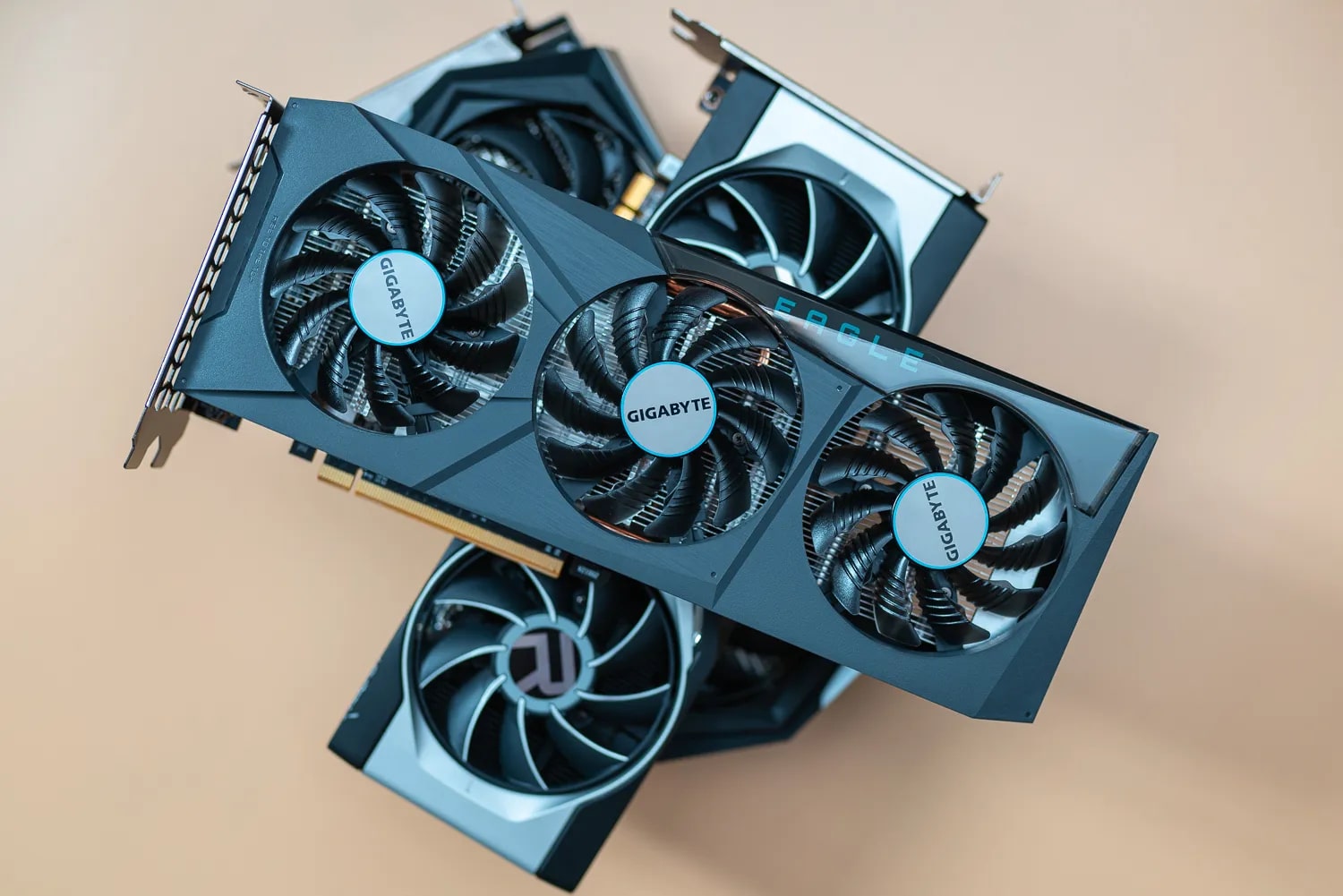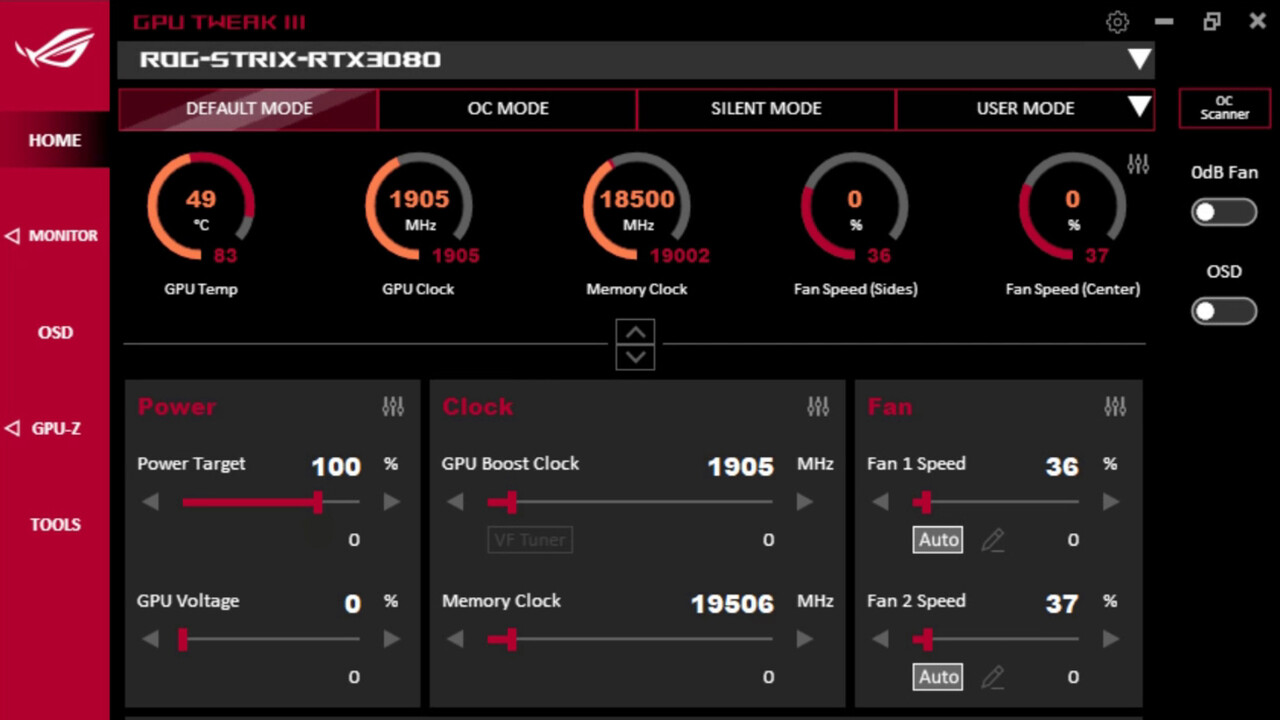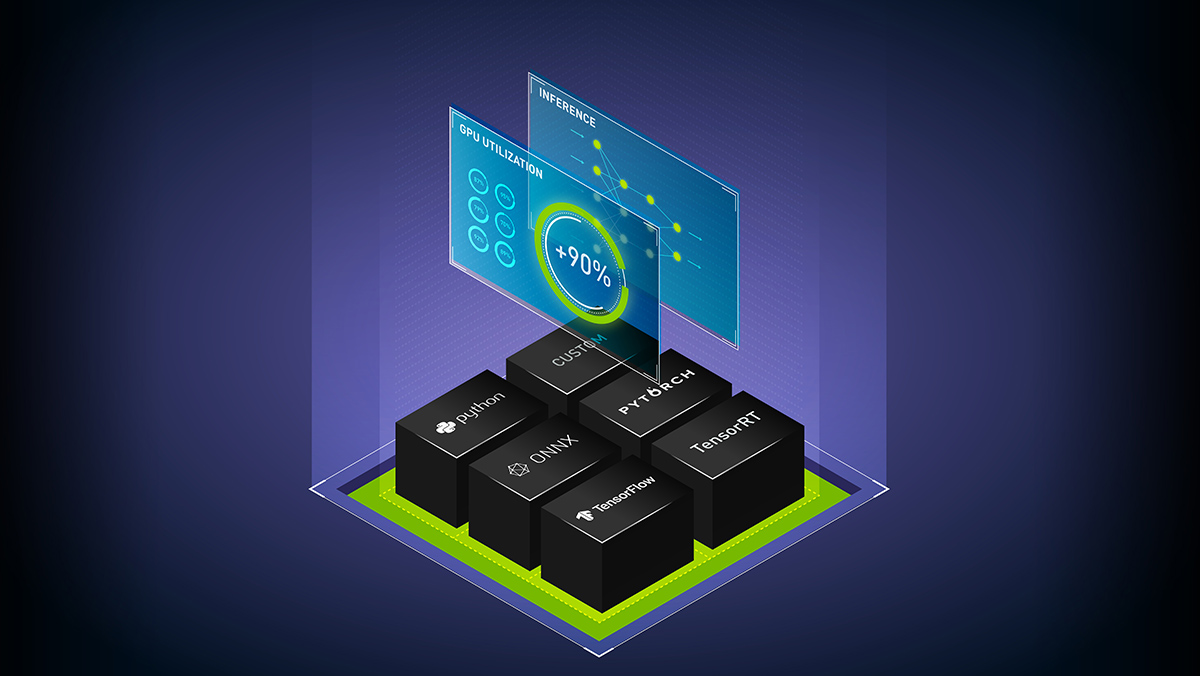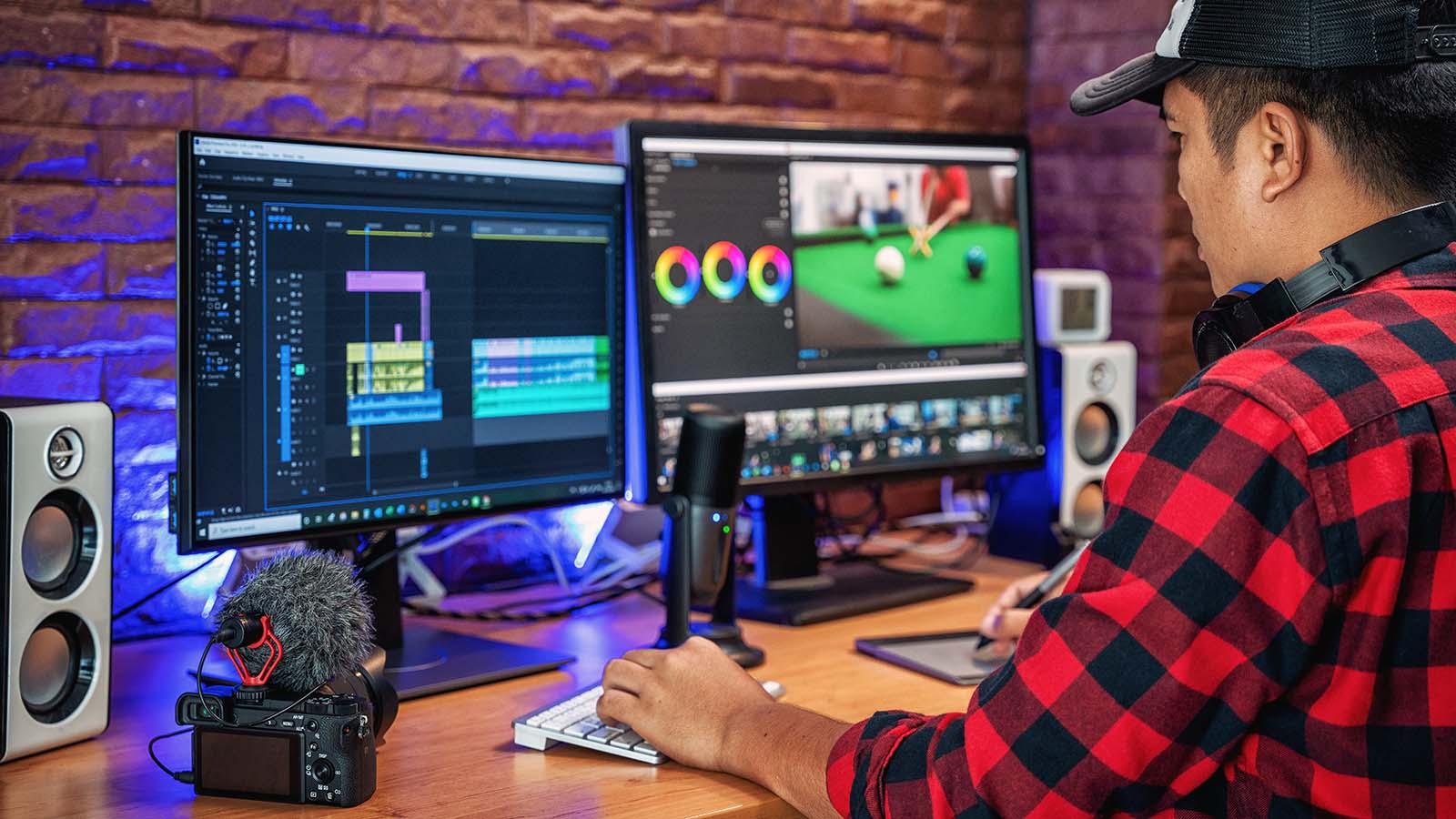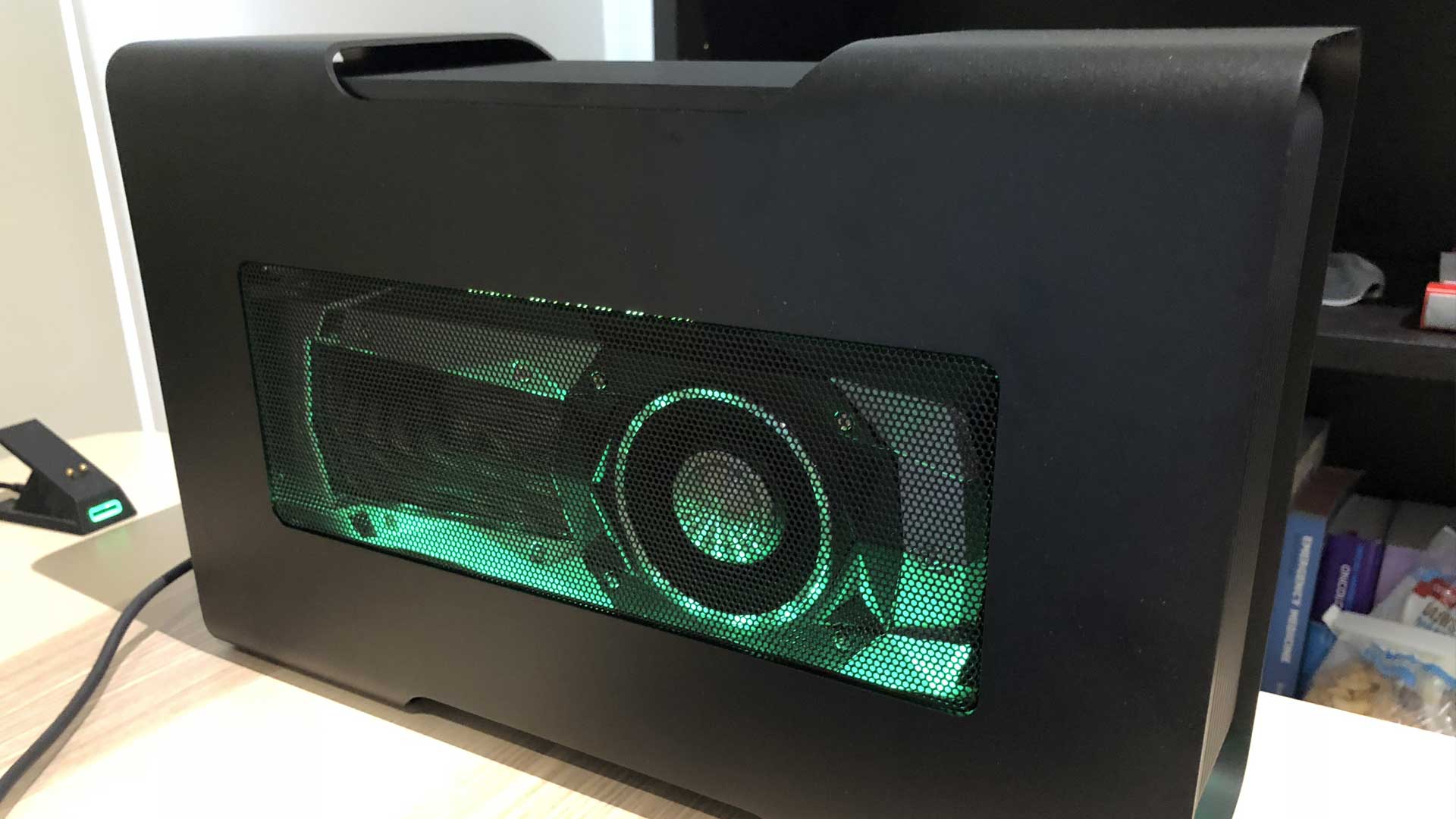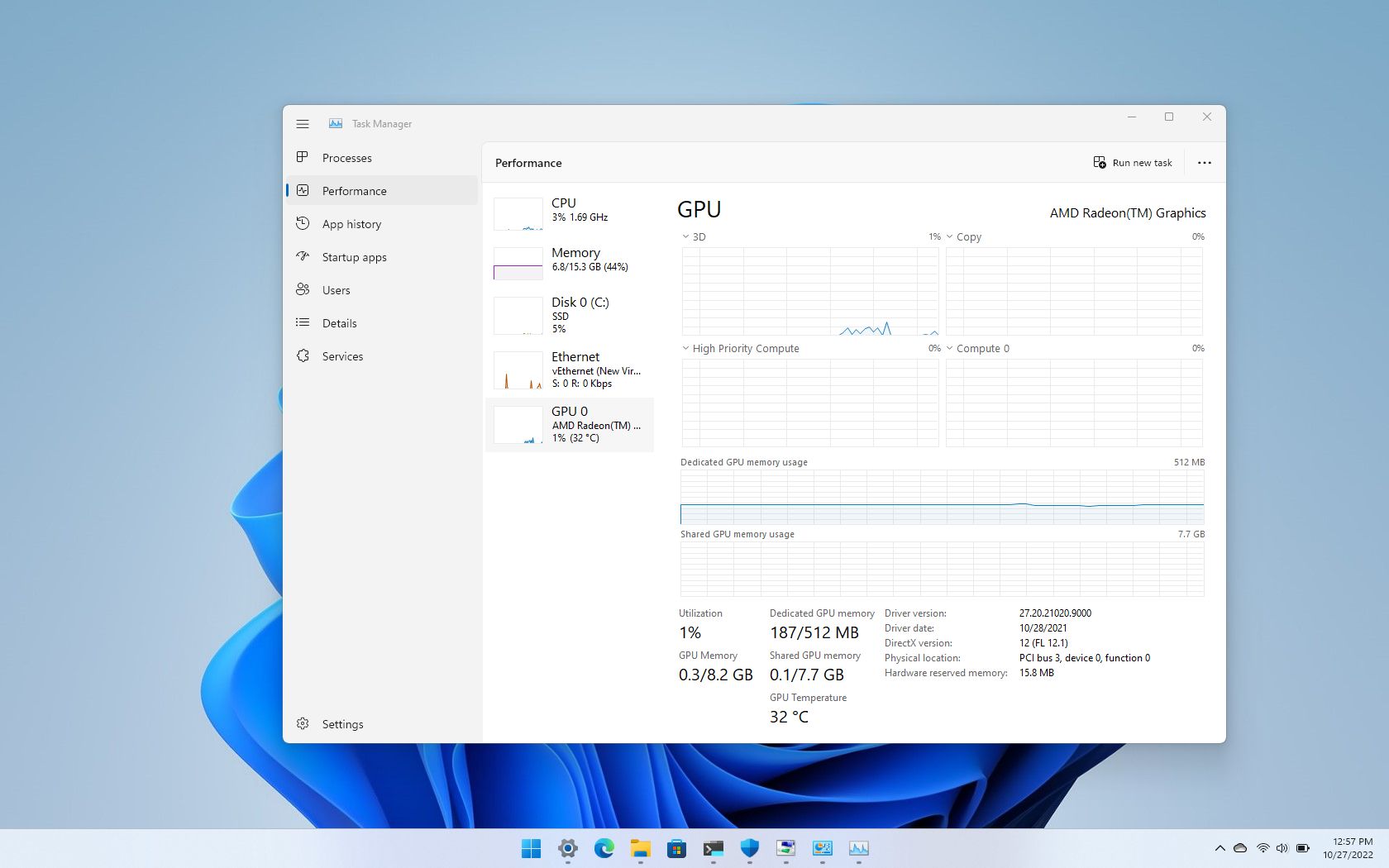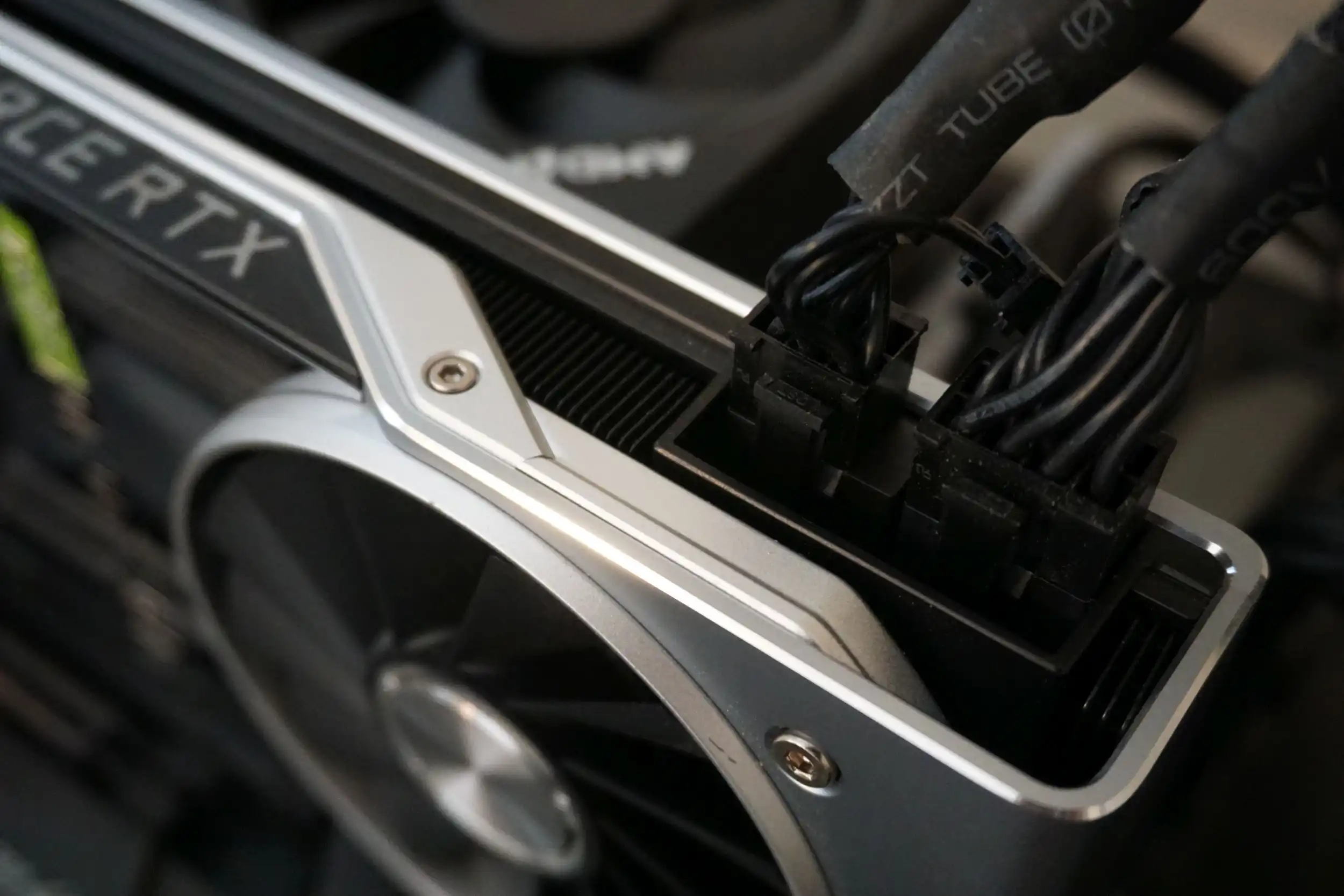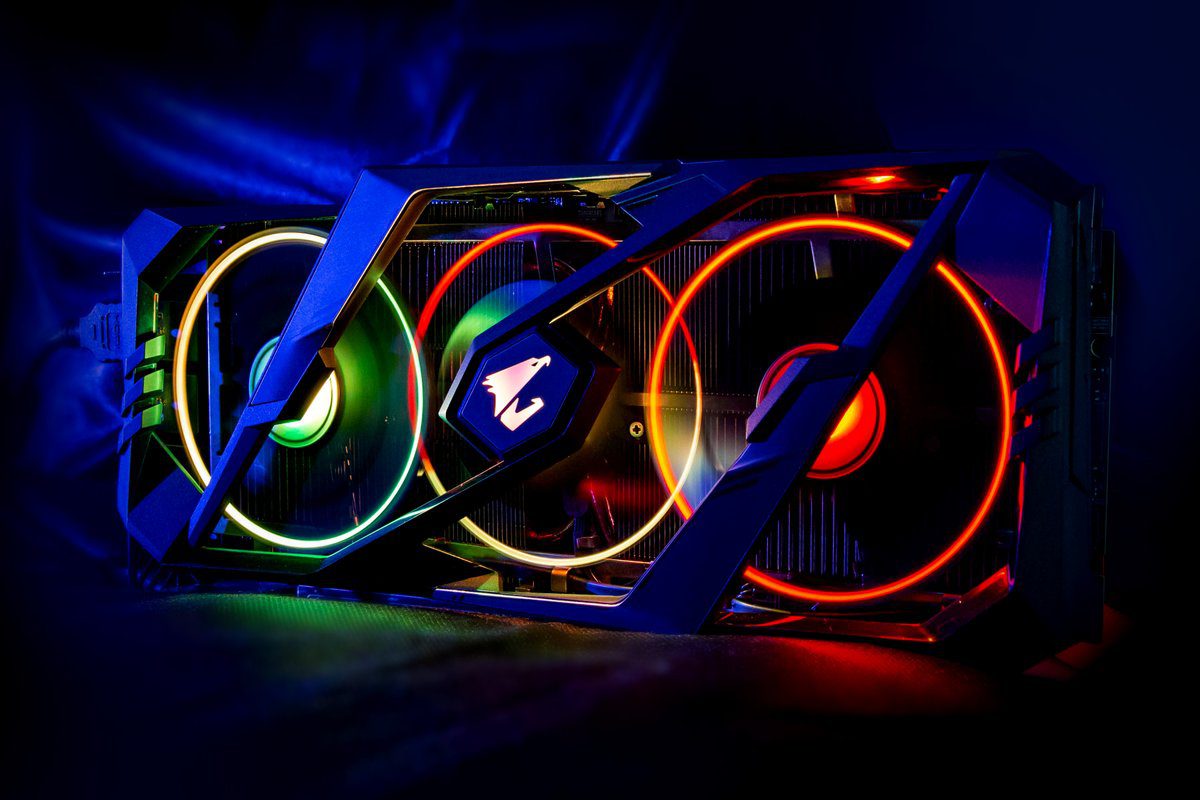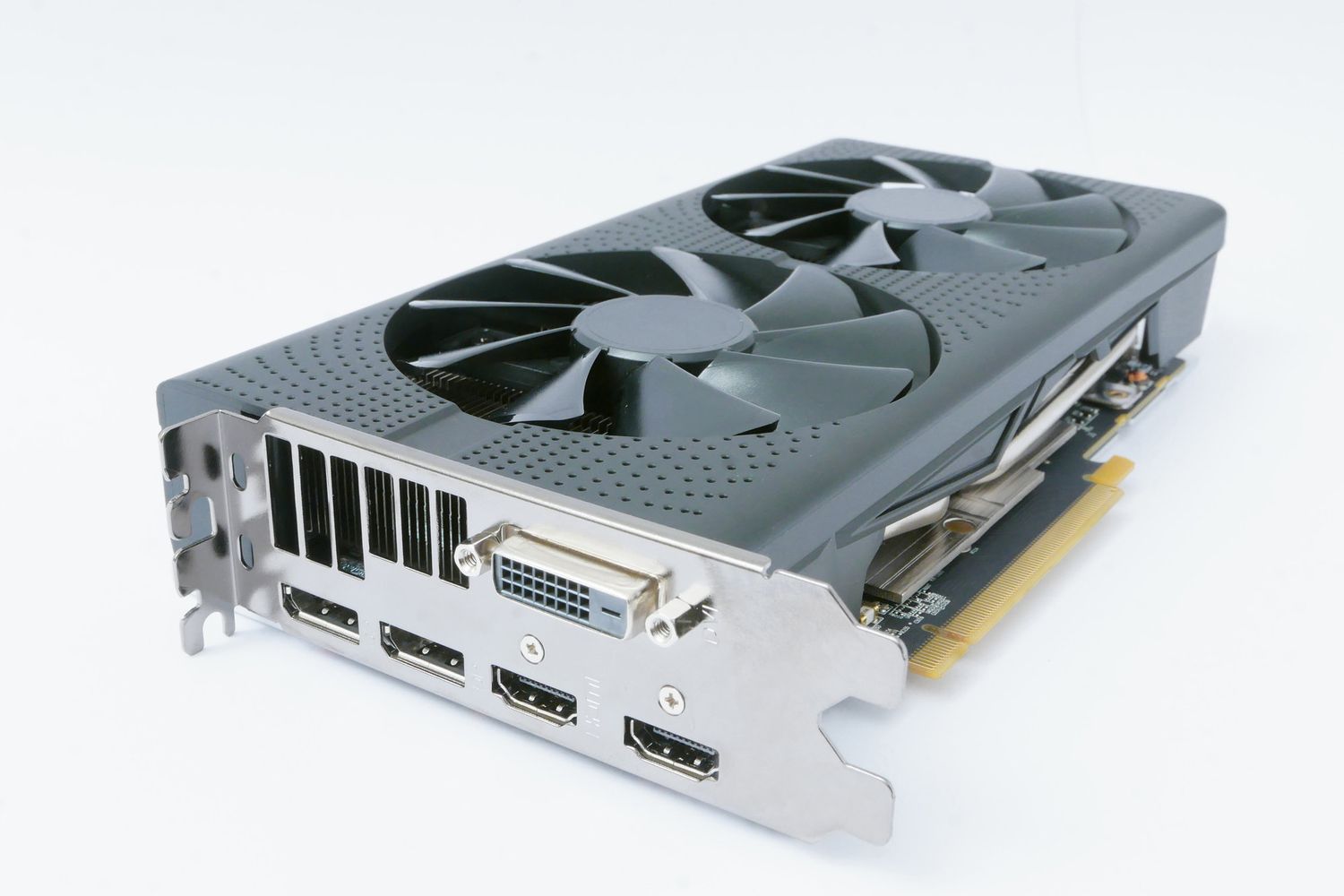Introduction
The world of computer graphics has come a long way since its inception. One of the key components that enable advanced graphics rendering is the Graphics Processing Unit (GPU). However, there is often confusion surrounding the terms GPU and graphics card, with many people using them interchangeably. While they are closely related, they are not exactly the same thing. In this article, we will explore the difference between a GPU and a graphics card.
A GPU, or Graphics Processing Unit, is a specialized electronic circuitry that is designed to accelerate the creation and rendering of images, animations, and video. It is essentially the heart of the graphics system in a computer or gaming device. The GPU works in parallel with the Central Processing Unit (CPU) to process and deliver high-quality graphics. It is built with hundreds or even thousands of processing cores, optimized for performing complex mathematical computations required for rendering graphics.
A graphics card, on the other hand, is the physical component that houses the GPU, along with other necessary components such as the memory, power supply, and cooling system. It is a printed circuit board that can be inserted into a computer’s expansion slot or connected externally. The graphics card acts as an interface between the computer’s motherboard and the display device, whether it be a monitor, a television, or a virtual reality headset.
Now that we have clarified the difference between a GPU and a graphics card, let us look into their individual functions and how they relate to each other.
Definition of GPU
The GPU, which stands for Graphics Processing Unit, is a specialized processor that is responsible for rendering and displaying visual content on a computer or gaming device. It is designed to handle complex mathematical calculations necessary for generating graphics, such as creating 3D models, rendering textures, and performing lighting and shading calculations.
In simple terms, the GPU acts as the “brain” behind the graphics system, processing and transforming data into images that can be displayed on a monitor or other output device. It works alongside the CPU to efficiently handle the computational tasks involved in graphics rendering.
What sets the GPU apart from the CPU is its parallel processing capability. While the CPU is designed to handle a wide range of tasks, the GPU focuses specifically on graphics processing and excels at performing repetitive calculations simultaneously. It achieves this parallelism by utilizing multiple cores or stream processors, allowing for efficient processing of graphics-related tasks.
The development of GPUs has revolutionized the field of computer graphics, enabling realistic and immersive visual experiences. Modern GPUs are equipped with advanced technologies such as shading models, anti-aliasing, and texture mapping, which contribute to the high-quality rendering of images and videos.
As technology continues to advance, GPUs are becoming increasingly powerful and efficient. They are now utilized not only in gaming systems but also in various fields such as scientific research, artificial intelligence, and virtual reality. The parallel processing capabilities of GPUs make them highly effective in handling computationally-intensive tasks, making them invaluable tools for accelerating complex calculations in various applications.
In summary, a GPU is a specialized processor designed for handling graphics processing tasks. It works in conjunction with the CPU to render and display visual content, utilizing parallel processing capabilities to efficiently perform complex calculations. The development of GPUs has significantly enhanced the visual capabilities of computers and other electronic devices, opening up new possibilities in the world of graphics and image processing.
Definition of Graphics Card
A graphics card, also known as a video card or display card, is a hardware component that is responsible for generating and outputting visual content from a computer or gaming device. It is a critical component in the graphics system, working in conjunction with the GPU to render and display images, videos, and animations.
The primary purpose of a graphics card is to take the processed data from the GPU and convert it into a format that can be displayed on a monitor or other output device. It serves as the interface between the computer’s motherboard and the display device, transmitting the graphical information in a compatible format and connecting via ports such as HDMI, DisplayPort, or VGA.
Graphics cards are designed to handle the intense computational requirements of modern graphics rendering. They consist of several key components, including the GPU itself, which is the main processing unit responsible for executing graphics-related tasks. Additionally, they include dedicated memory known as Video RAM (VRAM), which stores the data required by the GPU to perform its calculations efficiently.
Graphics cards also include a cooling system, typically consisting of fans and heat sinks, to dissipate the heat generated during operation. This is crucial to prevent overheating and ensure the longevity and stability of the graphics card.
Modern graphics cards often come with additional features that enhance their performance and functionality. These may include technologies like real-time ray tracing, which simulates the behavior of light in a 3D environment to produce more realistic and immersive graphics. Other features include hardware acceleration for video encoding and decoding, support for multiple display outputs, and compatibility with virtual reality (VR) devices.
Graphics cards are not limited to desktop computers alone; they are also used in laptops, gaming consoles, and other electronic devices where visual rendering is required. The power and capabilities of a graphics card can vary significantly depending on the model and specifications, enabling users to choose a card that suits their specific needs and requirements.
In summary, a graphics card is a hardware component that works in conjunction with the GPU to render and display visual content on a computer or gaming device. It serves as the interface between the GPU and the display device, converting processed data into a format that can be shown on a screen. With advancements in technology, graphics cards offer various features and capabilities that enhance the quality and performance of visual rendering.
Function of GPU
The function of a GPU, or Graphics Processing Unit, is to accelerate the processing and rendering of visual content on a computer or gaming device. It handles the complex calculations required for graphics rendering, allowing for faster and more efficient generation of images, videos, and animations.
One of the primary functions of the GPU is to perform geometric calculations necessary for creating and manipulating 3D models in a virtual environment. It handles tasks such as transforming vertices, projecting objects onto a 2D screen, and applying various transformations like scaling, rotation, and translation. These calculations are essential for rendering realistic and immersive 3D graphics.
In addition to geometric calculations, the GPU is responsible for performing pixel-based operations. It handles tasks such as rendering textures onto 3D surfaces, applying lighting and shading effects, and performing pixel-level computations, including anti-aliasing and depth testing. These operations contribute to the overall visual quality and realism of the rendered scene.
Another key function of the GPU is parallel processing. Unlike the Central Processing Unit (CPU), which performs tasks sequentially, the GPU is designed to handle multiple calculations simultaneously. This parallelism is crucial for handling the vast number of calculations required for graphics rendering. By dividing the workload among its many processing cores or stream processors, the GPU can effectively accelerate the processing of graphics-related tasks.
Furthermore, GPUs are increasingly being used for general-purpose computing tasks beyond graphics. Their parallel processing capabilities make them well-suited for performing advanced computations in fields such as scientific research, machine learning, and data analysis. GPUs can be utilized for tasks like molecular modeling, data simulation, image and video processing, and deep learning training.
To execute its functions, the GPU relies on software applications that utilize its capabilities. This includes graphics APIs (Application Programming Interfaces) like OpenGL and DirectX, which provide a standardized set of functions for developers to interact with the GPU. These APIs enable developers to harness the power of the GPU to render graphics, create visual effects, and optimize performance.
In summary, the primary function of a GPU is to accelerate the processing and rendering of visual content. It performs geometric calculations, pixel-based operations, and parallel processing, all of which contribute to the generation of high-quality graphics. The GPU’s capabilities extend beyond graphics rendering and are employed in various fields, making it a versatile tool for both graphics-intensive applications and general-purpose computing tasks.
Function of Graphics Card
The function of a graphics card, also known as a video card or display card, is to convert the processed data from the Graphics Processing Unit (GPU) into a format that can be displayed on a monitor or other output device. It serves as the interface between the computer’s motherboard and the display device, ensuring the smooth and accurate presentation of visual content.
The primary function of a graphics card is to render and display graphics, videos, and animations generated by the GPU. It takes the graphical data processed by the GPU and converts it into signals that can be understood by the display device. This includes transforming the digital data into analog signals, applying appropriate color spaces, and adjusting the resolution and refresh rate to match the capabilities of the connected display.
In addition to rendering graphics, graphics cards often come with features that enhance their functionality. One of the key functions is video acceleration, which offloads the task of decoding and encoding video from the CPU to the graphics card. This allows for smoother playback of high-definition videos, reduces strain on the CPU, and improves overall system performance.
Graphics cards also play a crucial role in gaming. They provide the necessary processing power to run graphically demanding games, rendering detailed environments, realistic lighting effects, and complex textures. Gaming-specific features on graphics cards, such as specialized anti-aliasing techniques and support for advanced shading models, enhance the visual quality and immersion of gaming experiences.
Another important function of a graphics card is to support multiple displays. Many modern graphics cards come equipped with multiple output ports, enabling users to connect multiple monitors or displays simultaneously. This feature is particularly useful for professionals who require a larger workspace or for gaming enthusiasts who want an immersive multi-monitor setup.
Cooling is another critical function of a graphics card. The GPU and other components on the graphics card generate heat during operation, and the cooling system, typically composed of fans and heat sinks, dissipates this heat. Adequate cooling ensures that the graphics card operates at optimal temperatures, preventing overheating and maintaining stability during prolonged usage.
Graphics cards are also responsible for managing the memory and resources required for graphics rendering. Dedicated video memory, known as Video RAM (VRAM), is used to store textures, shaders, and other data necessary for rendering high-quality graphics. Graphics cards efficiently manage the transfer of data between the GPU and VRAM to provide seamless performance.
In summary, the primary function of a graphics card is to convert the processed data from the GPU into a format that can be displayed on a monitor or other output device. It supports the rendering and display of graphics, videos, and animations, enhances gaming experiences, supports multiple displays, manages memory resources, and ensures proper cooling. Graphics cards are crucial components for creating visually stunning and immersive digital experiences.
Relationship between GPU and Graphics Card
The relationship between the GPU and graphics card is often interchanged or misunderstood, but they are closely intertwined yet distinct components in a computer’s graphics system.
The GPU, or Graphics Processing Unit, is the specialized processor responsible for handling the complex calculations and computations required for graphics rendering. It is the “brain” of the graphics system, executing tasks such as transforming 3D models, rendering textures, and applying lighting effects. The GPU consists of hundreds or even thousands of processing cores, designed to perform these calculations efficiently and in parallel.
On the other hand, a graphics card, also known as a video card or display card, is the physical hardware component that houses the GPU and other necessary components. It acts as the interface between the computer’s motherboard and the display device, converting the processed data from the GPU into a format that can be displayed on a monitor or other output device.
In essence, the graphics card serves as the carrier or carrier for the GPU. It includes components such as dedicated video memory (VRAM), power supply connectors, cooling systems, and display output ports. The VRAM on the graphics card stores the data required by the GPU for graphics rendering, such as textures, shaders, and rendering buffers. The power supply connectors on the graphics card ensure that the GPU and other components receive sufficient power to operate optimally. The cooling system, typically composed of fans and heat sinks, dissipates the heat generated by the GPU and other components, preventing overheating and maintaining stability.
The GPU and graphics card work closely together to deliver high-quality graphics and visual experiences. While the GPU is responsible for executing the complex calculations and computations, the graphics card provides the necessary hardware infrastructure for the GPU to operate effectively. The GPU relies on the graphics card’s VRAM for storing and retrieving data during rendering, while the graphics card ensures that the processed data from the GPU is accurately converted and transmitted to the display device.
The relationship between the GPU and graphics card can vary depending on the specific system configuration. In some cases, the GPU may be integrated directly into the computer’s motherboard, eliminating the need for a separate graphics card. This is commonly found in laptops and low-power devices. However, in most desktop computers and high-performance systems, a dedicated graphics card is used to enhance graphics processing capabilities.
In summary, the GPU and graphics card are closely related but distinct components in a computer’s graphics system. The GPU is responsible for executing the complex calculations and computations required for graphics rendering, while the graphics card provides the physical infrastructure, including VRAM, power supply connectors, cooling systems, and display output ports, to support the GPU’s operations. Together, they work harmoniously to deliver high-quality graphics and visual experiences.
Importance of GPU
The Graphics Processing Unit (GPU) plays a crucial role in today’s computing landscape, offering significant advantages and importance in various fields and applications. Here are some key reasons why the GPU is important:
1. Enhanced Graphics Performance: One of the primary functions of the GPU is to accelerate graphics rendering. With their parallel processing capabilities and dedicated hardware optimizations, GPUs can handle complex calculations required for realistic and immersive graphics. This is especially crucial in gaming, where high frame rates and detailed graphics are crucial for an enjoyable gaming experience.
2. Improved Visual Quality: GPUs are designed to handle advanced rendering techniques such as lighting and shading calculations, texture mapping, and anti-aliasing. These features enhance the visual quality of rendered images, videos, and animations by delivering more realistic lighting, smooth edges, and detailed textures. Better visual quality is vital in various industries, including entertainment, design, architecture, and virtual reality.
3. Computational Power: Modern GPUs are more than just graphics processors. They are becoming increasingly essential for general-purpose computing tasks, leveraging their parallel processing capabilities to accelerate various applications. GPUs excel at tasks such as scientific simulations, data analysis, machine learning, and AI, where massive amounts of data need to be processed simultaneously. Their computational power significantly speeds up these tasks compared to traditional CPUs.
4. Energy Efficiency: GPUs are not only powerful but also energy-efficient. GPUs can perform more calculations per watt compared to CPUs, making them ideal for computationally-intensive tasks. The rise of GPU computing and accelerators has allowed for more efficient and sustainable computing solutions, reducing power consumption and overall energy costs.
5. Advances in Technology and Innovation: The continuous advancements in GPU technology push the boundaries of what is possible in graphics rendering and computing. GPU manufacturers invest heavily in research and development, leading to the release of new generations of GPUs with improved performance, capabilities, and features. These advancements drive innovation in industries such as gaming, animation, film production, scientific research, and artificial intelligence.
6. Accessibility and Affordability: GPUs have become increasingly accessible and affordable. They are now available in a range of price points, allowing more users to benefit from their capabilities. This accessibility has opened up doors for individual creators, small businesses, and educational institutions to explore graphic-intensive applications without breaking the bank.
7. Gaming and Entertainment Industry: GPUs have revolutionized the gaming and entertainment industry, enabling incredible visual experiences and advancements. Real-time ray tracing, high-resolution textures, and realistic physics simulations are made possible by powerful GPUs. The gaming industry continues to push the boundaries of graphics technology, placing high demands on GPUs and fueling their further development.
In summary, the GPU’s importance lies in its ability to enhance graphics performance, improve visual quality, provide substantial computational power, boost energy efficiency, drive technological innovation, increase accessibility, and cater to the demands of the gaming and entertainment industry. As technology advances, GPUs continue to play a vital role in shaping the future of graphics rendering and computing.
Importance of Graphics Card
The graphics card, also known as a video card or display card, holds significant importance in today’s digital world. Here are several key reasons why the graphics card is important:
1. Visual Rendering and Display: One of the primary contributions of a graphics card is its ability to render and display visual content. It enables computers and devices to generate high-quality graphics, videos, and animations, providing a visually appealing and immersive experience for users. Whether it’s gaming, design, or multimedia applications, a powerful graphics card ensures smooth and realistic visuals.
2. Graphics Performance Optimization: Graphics cards are specifically designed to optimize graphics performance. They offload the complex calculations and computations required for graphics rendering from the CPU, freeing up CPU resources for other essential tasks. By having a dedicated graphics processing unit (GPU), a graphics card can handle the heavy lifting of graphics-related operations more efficiently, resulting in faster rendering times and improved overall system performance.
3. Gaming Excellence: Graphics cards are an integral part of the gaming experience. They provide the horsepower needed to run modern and graphically demanding games with high frame rates, detailed textures, and advanced visual effects. The gaming industry continually pushes the boundaries of graphics technology, and a capable graphics card allows gamers to enjoy a truly immersive and realistic gaming adventure.
4. Multiple Display Support: Graphics cards often support multiple displays simultaneously. This capability is particularly valuable for professionals who require multiple monitors for tasks such as video editing, 3D modeling, or financial analysis. Additionally, gamers can take advantage of multi-monitor setups for an extended field of view and an enhanced gaming experience.
5. Video Editing and Media Creation: Graphics cards play a vital role in video editing and media creation workflows. They provide hardware acceleration for video encoding and decoding, significantly reducing rendering time and improving productivity. Graphics cards with high memory capacity and advanced GPU technologies enhance the performance of video editing software, allowing for smoother timeline scrubbing, real-time effects previews, and faster video rendering.
6. Virtual Reality (VR) and Augmented Reality (AR): Graphics cards are essential for delivering immersive virtual reality and augmented reality experiences. These technologies demand powerful hardware to render high-resolution 3D environments and maintain smooth, responsive interactions. Graphics cards with VR-specific features and sufficient processing power ensure a seamless and realistic virtual experience.
7. Future-Proofing and Upgradability: Investing in a capable graphics card allows for future-proofing your system. As graphics technology advances, a well-performing graphics card can be easily upgraded, extending the lifespan of your computer or device. Upgrading the graphics card can provide a significant performance boost without the need to replace the entire system.
In summary, the graphics card holds immense importance in today’s digital era. It enables visual rendering and display, optimizes graphics performance, enhances gaming experiences, supports multiple displays, accelerates video editing and media creation, facilitates virtual reality and augmented reality applications, and provides opportunities for future upgrades. A powerful and capable graphics card ensures compelling visuals, smooth performance, and optimized computing capabilities for a wide range of applications and industries.
Types of GPUs
Graphics Processing Units (GPUs) come in various types, each designed to cater to different computing needs and applications. Here are some common types of GPUs:
1. Integrated GPUs: Integrated GPUs, also known as onboard or integrated graphics, are GPUs that are integrated directly into the computer’s motherboard or CPU. They share system memory with the CPU and are commonly found in entry-level laptops, desktops, and low-power devices. Integrated GPUs offer basic graphics capabilities for everyday computing tasks and are not designed for intensive gaming or graphics-intensive applications.
2. Discrete GPUs: Discrete GPUs are standalone graphics cards that are separate from the computer’s CPU or motherboard. These GPUs have their own dedicated memory and processing power, offering high-performance graphics rendering capabilities. Discrete GPUs are widely used in gaming systems, workstations, and high-end desktop computers where superior graphics performance is required.
3. Mobile GPUs: Mobile GPUs are specialized GPUs designed for use in laptops, tablets, and mobile devices. These GPUs are optimized for power efficiency and form factor restrictions but still offer decent performance for gaming, multimedia, and productivity tasks. Mobile GPUs often come in the form of integrated GPUs or lower-power discrete GPUs.
4. Workstation GPUs: Workstation GPUs are designed for professionals working in fields such as computer-aided design (CAD), 3D modeling, animation, video editing, and scientific simulations. These GPUs offer high computational power, extensive memory capacity, and specialized drivers optimized for professional applications. Workstation GPUs provide the necessary performance and accuracy required for demanding professional workflows.
5. Gaming GPUs: Gaming GPUs are specifically designed for gaming enthusiasts and deliver exceptional graphics performance for gaming applications. These GPUs offer high clock speeds, large memory capacities, and features like real-time ray tracing and AI enhancements. Gaming GPUs are often marketed as enthusiast-grade or high-end graphics cards and cater to gamers looking for the best possible gaming experience.
6. Data Center GPUs: Data center GPUs are designed for use in data centers and cloud computing environments. These GPUs are optimized for high-performance computing tasks, deep learning, artificial intelligence, and big data analytics. Data center GPUs deliver massively parallel processing capabilities and high memory bandwidth to handle large-scale computations and accelerate machine learning algorithms.
7. Embedded GPUs: Embedded GPUs are designed for use in embedded systems, such as digital signage, kiosks, smart TVs, and vehicle infotainment systems. These GPUs provide a balance between performance and power efficiency and are often integrated into system-on-chip (SoC) designs. Embedded GPUs enable graphics rendering and multimedia capabilities in embedded applications.
In summary, there are several types of GPUs designed to cater to different computing needs. Integrated GPUs offer basic graphics capabilities, discrete GPUs provide high-performance graphics rendering, mobile GPUs optimize for power efficiency in laptops and mobile devices, workstation GPUs are designed for professional applications, gaming GPUs focus on delivering exceptional gaming performance, data center GPUs cater to high-performance computing and machine learning, and embedded GPUs enable graphics capabilities in embedded systems. Understanding the different types of GPUs allows users to choose the appropriate GPU for their specific needs and applications.
Types of Graphics Cards
Graphics cards, also known as video cards or display cards, come in various types to cater to different computing needs and requirements. Here are some common types of graphics cards:
1. Entry-Level Graphics Cards: Entry-level graphics cards are designed for basic computing tasks and offer modest graphics performance. These cards are suitable for everyday tasks like web browsing, video playback, and light gaming. They are typically more affordable and require minimal power consumption, making them ideal for entry-level systems or budget-conscious users.
2. Mid-Range Graphics Cards: Mid-range graphics cards strike a balance between performance and affordability. They offer better graphics capabilities than entry-level cards and can handle more graphically demanding applications and games. Mid-range graphics cards are suitable for users who require a good balance between cost and performance without breaking the bank.
3. High-End Graphics Cards: High-end graphics cards are built for superior performance and are designed to handle demanding applications and games with high graphics settings. These cards offer powerful GPUs, large amounts of dedicated video memory, and advanced features such as real-time ray tracing and AI-enhanced rendering. High-end graphics cards are often sought after by gamers and professionals who require top-tier graphics performance.
4. Workstation Graphics Cards: Workstation graphics cards are optimized for professional applications such as computer-aided design (CAD), 3D modeling, animation, and video editing. They offer advanced features, extensive memory capacity, and specialized drivers tailored for professional software applications. Workstation graphics cards ensure accuracy, reliability, and stability for professionals working in demanding visual workflows.
5. Gaming Graphics Cards: Gaming graphics cards are specifically designed for gamers and offer exceptional graphics performance. These cards excel at rendering immersive gaming environments, high frame rates, and detailed textures. Gaming graphics cards often come with additional features like overclocking support, customizable lighting, and advanced cooling solutions to keep temperatures in check during intense gaming sessions.
6. External Graphics Cards: External graphics cards, also known as eGPUs, are graphics cards housed in an external enclosure that can be connected to a laptop or computer via Thunderbolt or USB-C connections. eGPUs are primarily used to boost the graphics performance of laptops or systems that have weaker built-in graphics capabilities. They provide the flexibility to upgrade graphics performance without having to replace the entire system.
7. Multi-GPU Setup: Some advanced users and enthusiasts opt for multi-GPU setups, where two or more graphics cards are connected to work together in parallel. This setup, known as SLI (Scalable Link Interface) for Nvidia graphics cards or CrossFire for AMD graphics cards, can enhance graphics performance for high-end gaming or graphics-intensive tasks. However, multi-GPU setups require compatible motherboards and proper configuration to maximize performance gains.
Choosing the right type of graphics card depends on factors such as budget, specific requirements, and intended usage. Entry-level cards are suitable for basic computing tasks, mid-range cards offer a good balance of performance and affordability, high-end cards deliver top-tier graphics performance, workstation cards cater to professional applications, gaming cards prioritize gaming performance, external cards enhance graphics capabilities for laptops, and multi-GPU setups provide added performance for advanced users. Understanding these types allows users to select the appropriate graphics card for their computing needs.
Performance Comparison between GPU and Graphics Card
When discussing the performance of a computer’s graphics system, it is important to distinguish between the GPU (Graphics Processing Unit) and the graphics card, as they play distinct roles. Here, we will compare the performance of the GPU and the graphics card in terms of their capabilities and impact on overall system performance.
The GPU is the core component responsible for graphics rendering, calculations, and computations. Its performance is primarily measured in terms of its processing power, clock speed, and the number of processing cores or stream processors it possesses. It determines how efficiently the graphics rendering tasks are executed. A more powerful GPU will provide faster and smoother graphics rendering, enabling high frame rates, realistic textures, and advanced visual effects.
The performance of the graphics card, on the other hand, is determined by a combination of factors including the GPU, the amount and speed of the video memory (VRAM), the cooling system, and the power delivery system. The VRAM capacity is crucial for storing and accessing high-resolution textures and other data during rendering. A larger and faster VRAM allows for better performance when working with complex graphical content.
When it comes to gaming performance, the graphics card has a significant impact. Games rely heavily on the GPU’s processing power and VRAM to deliver smooth gameplay and stunning visuals. A high-performance graphics card, equipped with a powerful GPU and ample VRAM, enables gamers to play demanding games at high resolutions and graphics settings without sacrificing performance.
It is important to note that the performance of a graphics card is not solely determined by the GPU alone. Other factors, such as the power supply, cooling system, and the overall system configuration, can also affect the overall performance. A well-designed graphics card with efficient cooling and power delivery systems can maintain stable performance during prolonged gaming sessions or intense workloads.
In terms of overall system performance, the GPU and graphics card work together to deliver optimal results. A powerful GPU, when combined with a high-performance graphics card, provides a seamless and immersive visual experience. The integration of the GPU and graphics card ensures that the graphics rendering tasks are efficiently executed and displayed on the monitor or output device.
Ultimately, the performance of the GPU and graphics card depends on the specific models and configurations chosen. Higher-end GPUs and graphics cards generally offer superior performance, providing the necessary horsepower for demanding tasks such as gaming, content creation, and professional applications. However, it is important to strike a balance between performance and cost, considering the specific needs and budget constraints.
In summary, the performance of the GPU and graphics card is interrelated and crucial for delivering high-quality graphics rendering. The GPU’s processing power and the graphics card’s VRAM capacity, cooling system, and overall design all contribute to the overall performance. Choosing a powerful and well-rounded graphics card ensures smooth gameplay, seamless graphics rendering, and an enhanced overall computing experience.
Conclusion
Understanding the difference between a GPU and a graphics card is essential for grasping the intricacies of computer graphics and their performance. While the GPU is the specialized processor responsible for executing complex calculations required for graphics rendering, the graphics card houses the GPU and provides the physical infrastructure to transmit the processed data to the display device.
The GPU and graphics card work closely together to deliver optimal graphics performance, whether it be in gaming, professional applications, or everyday computing tasks. The GPU’s processing power, parallel processing capabilities, and specialized optimizations allow for efficient graphics rendering, while the graphics card ensures the smooth transmission of data and provides additional features and functionalities.
Both the GPU and graphics card play crucial roles in enhancing visual quality, improving gaming experiences, accelerating professional workflows, and enabling advanced applications such as virtual reality and artificial intelligence. These components are continuously advancing, with industry advancements driving innovation and pushing the boundaries of what is possible in graphics rendering and computing.
When choosing a GPU or graphics card, factors like performance, budget, intended usage, and system compatibility should be carefully considered. Higher-end graphics cards and GPUs offer superior performance but come at a higher cost, while budget-friendly options provide decent capabilities for everyday tasks.
In conclusion, the GPU and graphics card are integral components of a computer’s graphics system, each with its own functions and importance. Understanding their distinctions and performance capabilities empowers users to make informed choices, ensuring the best possible graphics performance and an enhanced computing experience.







